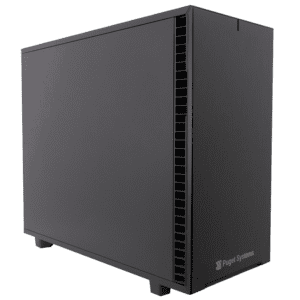Are the NVIDIA RTX 2080 and 2080Ti good for machine learning?
Yes, they are great! The RTX 2080 Ti rivals the Titan V for performance with TensorFlow. The RTX 2080 seems to perform as well as the GTX 1080 Ti (although the RTX 2080 only has 8GB of memory). I’ve done some testing using **TensorFlow 1.10** built against **CUDA 10.0** running on **Ubuntu 18.04** with the **NVIDIA 410.48 driver**.
The Best Way to Install TensorFlow with GPU Support on Windows 10 (Without Installing CUDA)
In this post I’ll walk you through the best way I have found so far to get a good TensorFlow work environment on Windows 10 including GPU acceleration. YOU WILL NOT HAVE TO INSTALL CUDA! I’ll also go through setting up Anaconda Python and create an environment for TensorFlow and how to make that available for use with Jupyter notebook. As a “non-trivial” example of using this setup we’ll go through training LeNet-5 with Keras using TensorFlow with GPU acceleration. We’ll get a setup that is 18 times faster than using the CPU alone.
Install TensorFlow with GPU Support on Windows 10 (without a full CUDA install)
In this post I’ll walk you through the best way I have found so far to get a good TensorFlow work environment on Windows 10 including GPU acceleration. I’ll go through how to install just the needed libraries (DLL’s) from CUDA 9.0 and cuDNN 7.0 to support TensorFlow 1.8. I’ll also go through setting up Anaconda Python and create an environment for TensorFlow and how to make that available for use with Jupyter notebook. As a “non-trivial” example of using this setup we’ll go through training LeNet-5 with Keras using TensorFlow with GPU acceleration. We’ll get a setup that is 18 times faster than using the CPU alone.
Install TensorFlow with GPU Support the Easy Way on Ubuntu 18.04 (without installing CUDA)
TensorFlow is a very important Machine/Deep Learning framework and Ubuntu Linux is a great workstation platform for this type of work. If you are wanting to setup a workstation using Ubuntu 18.04 with CUDA GPU acceleration support for TensorFlow then this guide will hopefully help you get your machine learning environment up and running without a lot of trouble. And, you don’t have to do a CUDA install!
PCIe X16 vs X8 with 4 x Titan V GPUs for Machine Learning
One of the questions I get asked frequently is “how much difference does PCIe X16 vs PCIe X8 really make?” Well, I got some testing done using 4 Titan V GPU’s in a machine that will do 4 X16 cards. I ran several jobs with TensorFlow with the GPU’s at both X16 and X8. Read on to see how it went.
Build TensorFlow-GPU with CUDA 9.1 MKL and Anaconda Python 3.6 using a Docker Container
Building TensorFlow from source is challenging but the end result can be a version tailored to your needs. This post will provide step-by-step instructions for building TensorFlow 1.7 linked with Anaconda3 Python, CUDA 9.1, cuDNN7.1, and Intel MKL-ML. I do the build in a docker container and show how the container is generated from a Dockerfile.
Build TensorFlow-CPU with MKL and Anaconda Python 3.6 using a Docker Container
In this post I go through how to use Docker to create a container with all of the libraries and tools needed to compile TensorFlow 1.7. The build will include links to Intel MKL-ML (Intel’s math kernel library plus extensions for Machine Learning) and optimizations for AVX512.
GTC 2018 Impressions
NVIDIA’s Graphics Technology Conference (GTC) is probably my all-time favorite conference. It’s an interesting blend of “Scientific Research meeting” and Trade-Show. It’s put on by a hardware vendor but still feels like a scientific meeting. It’s not just a “Kool-Aid” fest! In this post I go present some of my thoughts about this years conference.
TensorFlow Installation CPU version
TensorFlow is a very powerful numerical computing framework. However, like any large research level program it can be challenging to install and configure. In this post I’ll try to give some guidance on relatively easy ways to get started with TensorFlow. I’ll only look at relatively simple “CPU only” Installs with “standard” Python and Anaconda Python in this post. (I also have a quick test with Intel Python.)
TensorFlow Introduction What is TensorFlow
TensorFlow is on it’s way to becoming the “standard” framework for machine learning. There are many reasons for that, and, it is not just for machine learning! In this post I’ll give a descriptive introduction to TensorFlow. This is the first post in a series on how to work with TensorFlow. Hopefully after reading thsi you will have a better understanding of the What? and Why? of TensorFlow.
